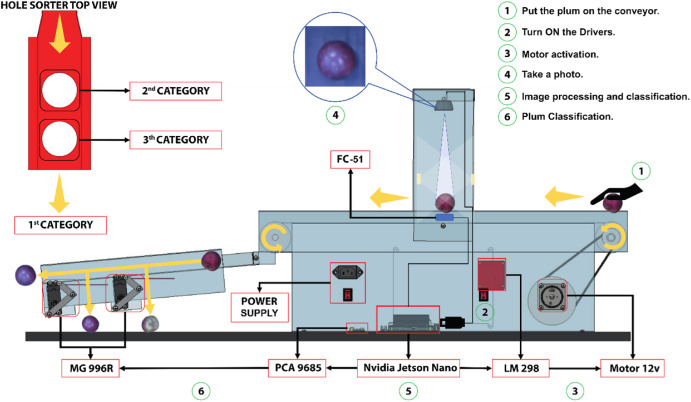
JAKARTA, inca.ac.id – In the realm of education, innovative teaching methods and engaging content are essential for fostering effective learning experiences. Plum Learning Modules represent a unique approach that takes inspiration from the natural growth of orchards and transforms it into interactive lessons. This article explores the concept of Plum Learning Modules, their development process, and how they can enhance educational outcomes.
Concept of Plum Learning Modules

Plum Learning Modules are designed to provide a structured yet flexible approach to education, drawing parallels between the growth of fruit in an orchard and the learning journey of students. Each module represents a “fruit” of knowledge, cultivated through careful planning, nurturing, and interaction.
Development Process
- Curriculum Design
The first step in creating Plum Learning Modules involves designing a curriculum that aligns with educational standards and learning objectives. Educators collaborate to identify key concepts and skills that students need to master, ensuring that each module is relevant and impactful. - Content Creation
Once the curriculum is established, content creators develop engaging materials that cater to diverse learning styles. This may include multimedia resources, interactive activities, assessments, and real-world applications. The goal is to create a rich learning environment that encourages exploration and curiosity. - Interactive Elements
A hallmark of Plum Learning Modules is their interactive nature. Incorporating technology, such as gamification, simulations, and virtual reality, allows students to actively engage with the material. These interactive elements promote deeper understanding and retention of knowledge. - Feedback and Iteration
Continuous improvement is vital for the success of Plum Learning Modules. Educators gather feedback from students and assess the effectiveness of each module. This feedback informs revisions and enhancements, ensuring that the content remains relevant and engaging.
Benefits of Plum Learning Modules
- Engagement and Motivation
The interactive nature of Plum Learning Modules keeps students engaged and motivated. By incorporating games, quizzes, and hands-on activities, learners are more likely to participate actively in their education, leading to improved outcomes. - Personalized Learning
Plum Learning Modules can be tailored to meet the individual needs of students. Educators can adjust the pace, depth, and complexity of the content based on each learner’s abilities and interests, fostering a more personalized learning experience. - Real-World Connections
By linking lessons to real-world applications, Plum Learning Modules help students understand the relevance of what they are learning. This connection to practical scenarios enhances critical thinking and problem-solving skills, preparing students for future challenges. - Collaborative Learning
The modular approach encourages collaboration among students. Group activities and projects promote teamwork and communication skills, essential competencies in today’s interconnected world. - Assessment and Reflection
Plum Learning Modules incorporate various assessment methods to gauge student understanding. Formative assessments, such as quizzes and reflections, provide valuable insights into learning progress and areas for improvement.
Implementing Plum Learning Modules in the Classroom
- Training for Educators
Successful implementation of Plum Learning Modules requires training for educators. Professional development programs can equip teachers with the skills and knowledge needed to effectively use interactive content and technology in their classrooms. - Integrating Technology
Schools should invest in the necessary technology infrastructure to support Plum Learning Modules. This includes devices, software, and internet access, ensuring that all students have the resources they need to engage with the content. - Creating a Supportive Environment
A supportive learning environment is essential for the success of Plum Learning Modules. Educators should foster a culture of curiosity and exploration, encouraging students to ask questions and seek answers collaboratively. - Monitoring Progress
Regular monitoring of student progress is crucial for adapting instruction and providing targeted support. Educators can use data from assessments to identify trends and adjust their teaching strategies accordingly.
Conclusion: Cultivating Knowledge Through Plum Learning Modules
Plum Learning Modules offer a dynamic and engaging approach to education that nurtures student growth and fosters a love of learning. By drawing inspiration from the natural processes of orchards, these modules create a rich educational environment where knowledge can flourish.
As educators continue to innovate and adapt to the changing landscape of education, Plum Learning Modules stand out as a promising solution for enhancing student engagement, personalizing learning experiences, and preparing learners for the challenges of the future. Through careful planning, collaboration, and the integration of interactive elements, educators can cultivate a thriving educational ecosystem that benefits all students.
Read also about Healthcare Literature to explore the latest research, clinical guidelines, and evidence-based practices shaping modern medicine and patient care.






